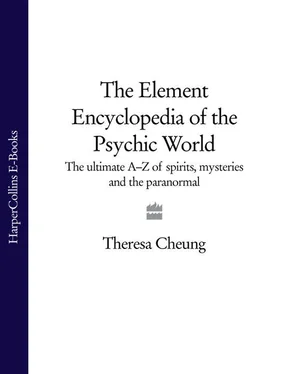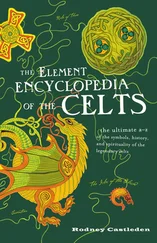People have always been fascinated by dreams and what they mean. All primitive religions viewed dreams as ways for the spiritsor deities to speak to humans. The earliest known dream dictionary dates back around 4,000 years. Now called the Chester Beatty Papyrus it came from Thebes in Upper Egypt and is kept in the British Museum. In the Chester Beatty Papyrus dreams are interpreted and translated as omensor prophecies. For example, dreaming that your teeth fall out is interpreted as a loved one trying to kill you.
In ancient Greece dreams were also thought to be unlucky or lucky predictions. Around AD 200, Artemidorus, a dream interpreter who lived in Asia Minor, wrote a book about dream interpretation that suggested that dreams were continuations of the dreamer’s day. The Old Testament makes countless references to dream interpretation.
The importance of dreams and their meanings were prominent in the writings of the Early Church Fathers, including St Augustine, up until the time of St Thomas Aquinas (1225-1274) who regarded dreams as insignificant; for several hundred years afterwards, dreams were no longer considered important. Even Shakespearecalled them ‘children of the idle brain’. Although dream interpretation did continue to be an important part of the service of magicians and astrologers, this dreams-should-be-ignored school of thought persisted until the nineteenth century. Then along came psychiatrists Sig-mund Freudand Carl Jung, the two men who have had the greatest impact on the way we look at dreams today.
Sigmund Freud (1856-1939) opened the door to the scientific study of dreams with his book The Interpretation of Dreams; he considered dreams to be the ‘royal road to the unconscious’ and believed them to be wish fulfilment of repressed sexual desires from childhood. To interpret dreams Freud used a method called free association in which the dreamer says whatever comes to mind in relation to events in the dream.
Freud’s work paved the way for the work of Carl Jung (1875-1961). Jung considered dreams to be expressions of the contents of the collective unconscious, a source of shared knowledge that exists within us all. Jung believed the purpose of dreams was to offer guidance and information about the self. They were the language of the unconsciousand they could tell us about the state of our inner lives; to ignore dreams was to court disaster. Even though dream symbolsfrom the collective unconscious have universal or archetypal meanings, according to Jung, only the dreamer could interpret the dream’s true meaning, not an outsider.
There have been other theories since Freud and Jung but for the most part dreams are regarded as tools for change, growth and wellbeing. No one knows how, but dreams seem to be able to link the conscious (waking) mind with the hidden part of the mind called the unconscious or intuitionand by so doing they provide a rich and powerful inner resource that can enhance life considerably. Today dream interpretation is extremely popular, with people from all walks of life using dreams as unique and very personal sources of comfort, guidance and inspiration.
Dreams, health and creativity
Scientists tell us that dreaming is essential to our mental, emotional and physical health and wellbeing, because dreams can help us relax, release frustrations, sort out information, solve problems or alert us to them, play out fantasies, offer inspiration and restore balance.
There are numerous famous examples of dreams offering inspiration. Solutions to problems, ideas for inventions and artistic endeavours have all found their way to the conscious mind via dreams. Mary Shelley dreamed of the creature that was to become Frankenstein. Other famous literary dreamers include Edgar Allan Poe, Samuel Taylor Coleridge, Charlotte Brontë, Robert Louis Stevenson and J R R Tolkien. Paul McCartney heard a haunting melody in one of his dreams and wrote it down. It became the song ‘Yesterday’. Inventions and ideas that have sprung from dreams include the model of the atom, the M9 analogue computer, the isolation of insulin in the treatment of diabetes and the sewing machine.
Dreams and the paranormal
Dreams of the dead are viewed in the West from a psychological perspective and not as actual encounters with ghosts, but many believe that the dead appear in dreams because they have a purpose: usually to offer advice and instruction, as happened in the Chaffin Will case. Some dreams involving the dead are also thought to be death omens. In the eighteenth century Lord Lytteltondreamt of a fluttering bird and a woman in white who told him he would die in three days’ time. Despite his best efforts to prove her wrong, Lyttleton died as predicted.
Although dreams that focus on communication between the living and the dead have been accepted in many cultures since ancient times as proof that the dead have the ability to interfere with the lives of the living, dreams have also always shared a strong link with supernatural powers, in particular with precognitionand telepathy.
Although rare, precognitive dreams are ones in which you see the future before it happens. The ancient Chaldeans, Chinese, Egyptians, Greeks, Romans and Native Americans all believed dreams were a method of foretelling the future, and even today there are instances when people claim to have dreamt of things before they happen. Many people, for example, claim to have had dreams of the 9/11 World Trade Center disaster before it happened. There are also stories of people who cancel trips or flights because of a foreboding dream or people who dreamt the winning lottery numbers.
There is strong evidence that some precognitive dreams warn about future health problems. Jung noticed that if his patients dreamt of injury to a horse - the archetypal symbol of animal life within the human body - they were often in the early stages of serious illness. A 1987 study at Michigan State University showed that cardiac patients who dreamt of destruction were far more likely to have worse heart disease than those who did not. Dreams also serve as a preparation for death, with terminally ill patients sometimes reporting transitional dreams of crossing bridges or walking through doors just before death. These dreams often bring peace of mind.
Dream telepathy has interested psychical researchers since the late nineteenth century. The founders of the Society for Psychical Researchin London collected numerous dream telepathy cases in their study of paranormalexperiences published in Phantasms of the Living (1886).
Interpreting your dreams
Have you ever wondered why dreams are often hard to make sense of? It’s because the information they contain is presented in the language of images and the number of images your brain can present is endless. Dream experts believe that the images are your own thoughts, feelings and ideas turned into a series of pictures or scenes and it’s up to the individual to translate and interpret them.
Your unconscious mind is working all the time using images, feelings and pictures from your past and present and linking them in with the issues currently concerning you. For example, if you feel stressed you may have a dream where you are swimming and can’t keep your head above water. If you feel confused you may have a dream where you are lost in a dark wood. Some of these images can be universally recognized - a boat, for example, is typically is a symbol of transition - but most of the images in your dreams can only really be interpreted by you. That’s \ why a dream dictionary isn’t always helpful as the interpretations in there will be universal and not unique to you.
Читать дальше


![Theresa Cheung - The Dream Dictionary from A to Z [Revised edition] - The Ultimate A–Z to Interpret the Secrets of Your Dreams](/books/692092/theresa-cheung-the-dream-dictionary-from-a-to-z-r-thumb.webp)









